Healing
Setting Intentions Successfully
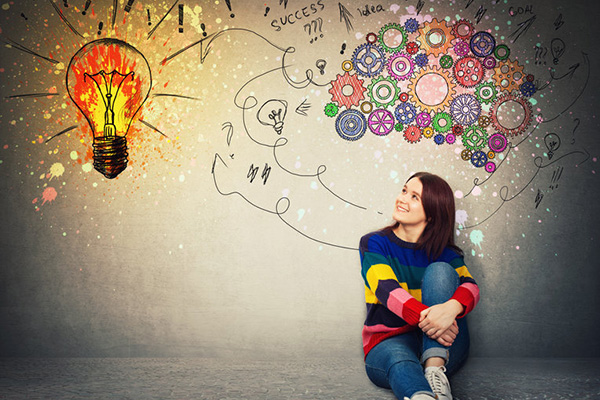 I have discovered at different times in my life how powerful intention, when guided from the heart, can be. Again, more recently, I experienced this when it was important for me to manifest some prosperity for my family and get my own health issues back on track.
I have discovered at different times in my life how powerful intention, when guided from the heart, can be. Again, more recently, I experienced this when it was important for me to manifest some prosperity for my family and get my own health issues back on track.
I was specific in setting my intention regarding the amount of money I needed to manifest in order to meet my family’s needs. I also set the intention to attract to me the information which would help me heal and return my sense of well-being.
Intention is a motivational force of energy and it’s a force to be reckoned with when our intention is for the highest good of all individuals involved. When we set our intention, we are focusing on positive visualizations and affirmations to help steer our lives in a desired direction.
I see intention as a process of becoming, a desire, or a longing to achieve a specific result. When you wish to help bring about better circumstances for others, and your intention of wanting the best things to happen for them, it works like mass prayer.
Every morning, before I begin work with clients, I stand in one corner of my work room and set the intention for the day by asking my spirit helpers to assist me in helping others on their pathway through life, and to help me to help customers find clarity and direction with their pressing concerns. Doing readings and healing with good intention works wonders, because one has the best interest of the client at heart, as opposed to working purely to make money.
Actually writing down your goals make them feel more real. In other words, ‘if you see it, you will believe it’. It is more than likely your goals will change in time, and as you surpass them you will be making new and higher goals. There are plenty of negative people (often relatives), who say this is not the time to dream, including the media who say it’s time to be realistic. Granted, we have to be sensible and make reasonable arrangements to meet our worldly commitments, but the greatest challenge is our ‘attitude’ about reality.
Jupiter, Pluto And The Judgment Of Solomon
 One of my favorite astrologers, Christopher Renstrom, is an uber-wise storyteller who has a knack for bringing profound astrological messages to life. He recently spoke about the separating Jupiter-Pluto energies, likening both Jupiter and Pluto to judges: Jupiter symbolizing Zeus, the benevolent King of Mount Olympus, and Pluto to Hades, his brother, the King of the Underworld.
One of my favorite astrologers, Christopher Renstrom, is an uber-wise storyteller who has a knack for bringing profound astrological messages to life. He recently spoke about the separating Jupiter-Pluto energies, likening both Jupiter and Pluto to judges: Jupiter symbolizing Zeus, the benevolent King of Mount Olympus, and Pluto to Hades, his brother, the King of the Underworld.
In many ways these energies are opposite to one another, one reigning in the light (Jupiter), the other in the dark at night, beneath the surface of things (Pluto). Yet, both kings preside in judgment over matters brought to their attention.
Christopher went on to relay the story of The Judgement of Solomon from the Hebrew Bible, in which Solomon rules between two women both claiming to be the mother of a particular child. The explained that this story beautifully exemplifies Jupiter and Pluto in their role as judges over life and death.
In the story, two women had given birth, but tragically one of the babies did not survive when the mother accidentally rolled over on the child in her sleep. In the morning, she secretly switched the two babies, giving the deceased newborn to the other mother. This mother awoke and found the lifeless child, but knew this wasn’t her baby. She knew the living child belonged to her instead, but the other mother denied this and wouldn’t give up the living child.
The case went before King Solomon, who agreed to listen to anyone’s complaint, no matter what walk of life they came from. And so, each mother, in-turn, argued her side, with no corroborating witnesses to back them up.
Solomon listened intently, then asked for a sword. He then ordered the living child be cut in two, with one half handed to each of the mothers as a fair resolution of the dispute. But the true mother of the living baby implored the king not to kill the innocent child, but instead willingly relinquished the baby to the other mother. The illegitimate mother, however, demanded the child be killed so no one would have it, dispensing her own morbid sense of justice.
Using Crystals To Reduce Stress And Anxiety
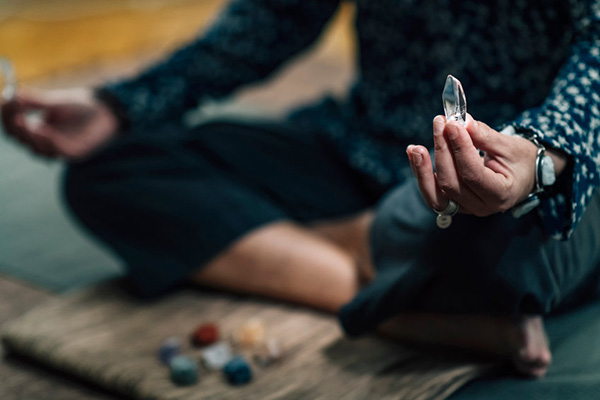 We all live with various amounts of stress in our daily life, and the last few years have been especially trying. But stress doesn’t have to be overwhelming for the spiritually conscious person. Apart from meditation and similar spiritual practices, an especially powerful ally can also be found in the use of various types of crystals. Whether you choose to keep them in your pocket, wear them as jewelry, or use them in your energy work, there is a crystal for everyone based on your own needs and affinities.
We all live with various amounts of stress in our daily life, and the last few years have been especially trying. But stress doesn’t have to be overwhelming for the spiritually conscious person. Apart from meditation and similar spiritual practices, an especially powerful ally can also be found in the use of various types of crystals. Whether you choose to keep them in your pocket, wear them as jewelry, or use them in your energy work, there is a crystal for everyone based on your own needs and affinities.
Among the most popular stones for crystal therapy and relieving stress is quartz. It’s easy to obtain and comes in different types. Clear quartz (what many people might think of when they visualize a crystal) offers clarity and vision when things seem muddled. Like a prism, it also brings out the hidden qualities of other crystals.
But quartz is also available in other colors to support us with life’s many challenges, such as rose (pink) to settle turbulent emotions and find solace when broken-hearted, and smoky (grey) to bolster our courage.
Another popular clear stone is citrine. As its name suggests, it is orange or yellow in color. Carrying a citrine stone is like having a drop of sunlight in your pocket; it wards off the gloom on even the worst ‘rainy,’ stressful day.
Blue agate (available in different shades) is useful when clearing up stress related to miscommunication. It is a recommended to keep one at the office or take it with you to school.
Almost as popular as quartz, amethyst (opaque purple) is a go-to if you tend to suffer from nervousness, anxiety, or panic attacks. It can be used while reciting mantras to invoke deeper serenity and calm.
Ritual In A Modern Spiritual Lifestyle
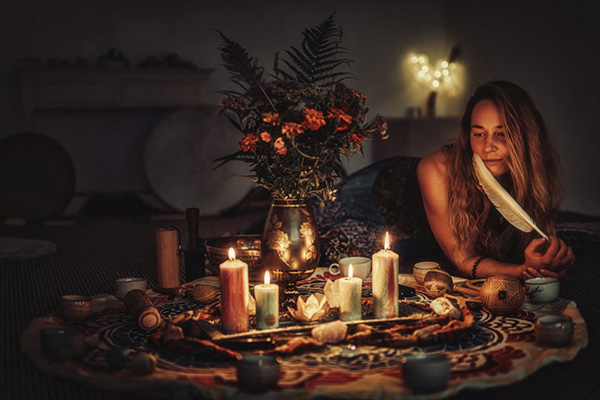 Rituals, rites and ceremonies are the oldest forms of spiritual practice and essential aspects of all religions and belief systems. A ritual is a meaningful or symbolic action or series of actions that has a standardized format or sequence and can therefore be repeated in exactly the same way by individuals, groups or even communities.
Rituals, rites and ceremonies are the oldest forms of spiritual practice and essential aspects of all religions and belief systems. A ritual is a meaningful or symbolic action or series of actions that has a standardized format or sequence and can therefore be repeated in exactly the same way by individuals, groups or even communities.
The metaphysical energy generated when we focus our intent using symbols, tokens and metaphoric activities during a ritual that has special meaning for us personally can be highly transformative! Whether you practice ritual in a group or solo, it can supercharge your manifesting ability and aid in any mental, physical, emotional, and spiritual healing processes you may be going through.
When some people hear the word ‘ritual,’ they tend to imagine darkened, smoke-filled rooms with mysterious people in long robes, chanting strange refrains perhaps, all choreographed with everyone knowing their roles. I’m sure there are people who practice rituals in this way and elements like incense and chanting can indeed be party of a rite or ceremony. But a ritual can also be more simply crafted in a way to fit into a modern lifestyle and everyday spiritual practice.
In my own practice, I created a little ‘altar’ for myself. A small sacred space where I have placed a few candles, some incense, crystals, feathers and a few other symbolic tokens which hold special meaning for me. I also added a picture of my mother and a statue of an angel given to me when my grandpa passed away. In this way I created a sacred space that has deep meaning for me personally and brings me into a spiritual mindset.
You don’t need to have a lot of room for this in your home. So, you can even create a small sacred space for yourself on the corner of a dresser or table top. As my practice has evolved, I now find that any spare surface or quiet corner in the places where I have lived can become a nook for little spiritual treasures that I find during my adventures. Once you start creating a sacred space, the Universe will send you little gifts to help you along.
Eye Gazing As A Spiritual Practice
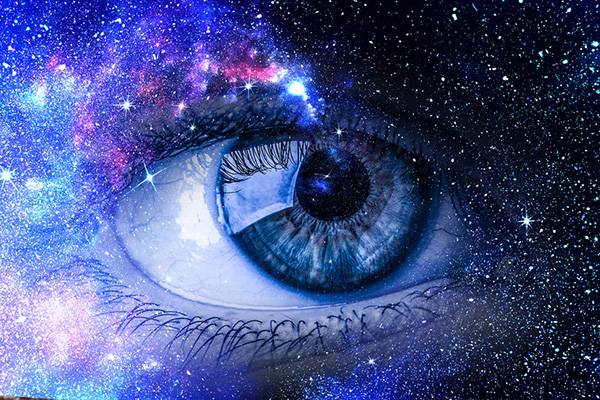 Eye gazing is a powerful, ancient practice in which two people engage in a shared meditation practice during which eye contact is maintained for an extended period of time. Eye gazing is usually done for about ten minutes at a time, although it can certainly be any duration preferred.
Eye gazing is a powerful, ancient practice in which two people engage in a shared meditation practice during which eye contact is maintained for an extended period of time. Eye gazing is usually done for about ten minutes at a time, although it can certainly be any duration preferred.
Eye gazing can be used to access past life information, promote healing, connect to your higher self, guides, or angels, and almost anything else you can imagine. The eyes are the windows to our soul, and our soul is the singularity that connects us to everything else: the Universe, Source, God, the Divine. Eye gazing is also a profound manifesting tool we can use to further develop our ‘spiritual muscles,’ so to speak.
Before you include eye gazing in your spiritual practice, I recommend you read my previous blog on the essentials of eye gazing. Once you are more familiar with the basics, you can also apply the following guidelines to your eye gazing practice.
To use eye gazing for a specific purpose, you must set a clear intention beforehand, and then hold that intention throughout the gaze. You hold an intention by simply keeping a gentle awareness in the back of your mind that what you are seeing during the gaze is relevant to your intention, and trusting that whatever comes forward is always relevant.
It’s important not to simultaneously hold any expectations about what you’re going to see, or to resist anything that comes up spontaneously, just because you don’t immediately see its relevance or connection to your intention. Keep an open mind and be flexible and accepting in the flow of your gazing experience.
If you’re gazing alone, sit comfortably in front of a mirror, take a few centering breaths, and then state your intention out loud. I prefer to speak aloud in my spiritual practice whenever possible, as words are energy forms and therefore add a ‘weight’ to our prayer requests, intentions, and affirmations. State your intention out loud and ask Spirit to provide insight around this intention. Use language that feels right for you.
Healing From A Relationship Breakup
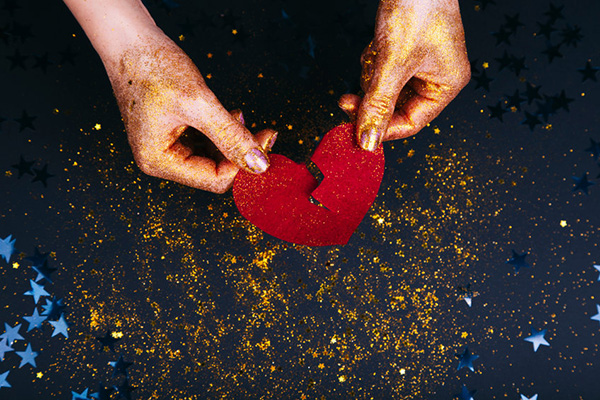 All breakups are painful. There really is no quick fix to heal a broken heart. But there are some things one can do to gradually move on and begin a new journey without your ex-partner.
All breakups are painful. There really is no quick fix to heal a broken heart. But there are some things one can do to gradually move on and begin a new journey without your ex-partner.
The first thing to do is to accept the reality of the situation. It is not going to do any good to dwell on the past or try to work things out at this point. In this early stage of grieving, it is usually not a good idea to speak to your ex at all. It will simply prolong the pain.
At times you might be tempted to reach out to your ex, but listen to what your heart and soul is telling you. Trust your gut. It will never steer you wrong.
You may also want to avoid reminders of your ex and your relationship. No need to put any more stress or pressure on yourself than you have to. It is best to accept what is and move on.
The most important thing now is to put yourself first and be true to you. Now is the time to come to grips with your feelings. Don’t hold back if you want to cry and let it out.
We are always trying to look for answers as to why something happened. Many times, we blame ourselves, thinking that things may have been different if we would have done more. We put ourselves through so much unnecessary guilt sometimes. It is unfair and pointless to do that to ourselves and not the best path to healing. Seek forgiveness for your ex and yourself.
A healthy lifestyle is important in times of grief. Exercise is especially beneficial. It makes you feel more in control of yourself and increases ‘feel good’ hormones like dopamine that will reduce depression.
Less Stress, More Meditation
 We do our best to not be in a state of constant stress, toxic environments and unhealthy situations. We try so hard to keep our life in a state of contentment and happiness.
We do our best to not be in a state of constant stress, toxic environments and unhealthy situations. We try so hard to keep our life in a state of contentment and happiness.
We intuitively know that if we keep our stress levels down, we sleep better and we think more clearly. Being in a state of zen is our original state.
When we are at peace, we are more able to hear that inner voice telling us what to do, and not do. It is what I call our inner GPS. We can hear it much more clearly when I we are centered and grounded, and not stressing.
I have found that only through meditation can I fully achieve this state of ‘less stress’ in my life. Of course, we can never eliminate stress completely, but meditation does empower me to achieve that state of contentment more easily.
After many years of practice, I can even achieve this within a few moments by simply focusing on my breath. But it is best when I take a good 30 minutes to go through my meditative steps. This includes breathwork and visualizing my body relaxing from my toes to top of my head.
During my destressing meditation I also take some time to send out love, light and peace to everyone that I know and love, including those who I don’t necessarily like very much. I also visualize the things I want to manifest in my life.